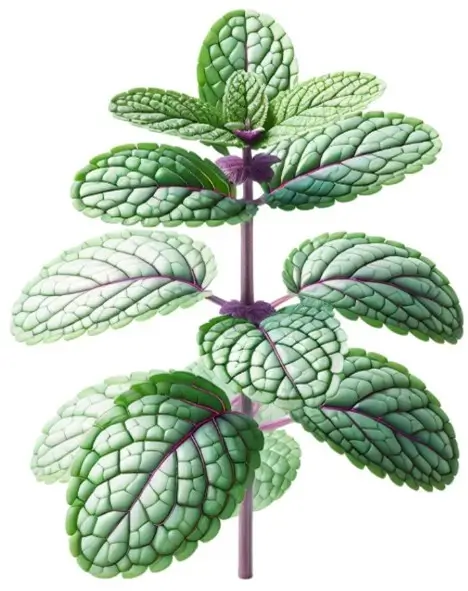Source and Occurrence of Menthol:

- Menthol is predominantly found in the essential oils of the peppermint plant (Mentha × piperita), but it is also present in other mint species such as spearmint (Mentha spicata).

- It is widely used in pharmaceuticals, cosmetics, and food industries for its cooling sensation and minty flavor.
Isolation of Menthol:
-
Extraction:
- Steam Distillation:
- The primary method for extracting menthol involves steam distillation of peppermint leaves.
- The plant material is subjected to steam, which vaporizes the volatile compounds, including menthol.
- Procedure:
- Fresh peppermint leaves are harvested and subjected to steam under controlled conditions.
- The steam carries the volatile oils into a condenser, where they are cooled and condensed back into liquid form.
- The resulting mixture separates into an aqueous phase and an oil phase due to immiscibility.
-
Separation:
- The oil phase, containing menthol and other terpenoids, is collected. Menthol may constitute about 30-40
-
Purification:
- Crystallization: Menthols can be purified by fractional crystallization. The crude menthol is dissolved in a suitable solvent (e.g., ethanol) and cooled to allow menthol crystals to form.
- Recrystallization: Further purification is achieved by recrystallizing the menthols crystals to remove impurities.
Identification:
-
Physical Properties:
- Appearance: Pure menthol appears as colorless crystals.
- Melting Point: Approximately 42-44°C.
- Odor: Characteristic minty aroma.
-
Spectroscopic Techniques:
- Infrared (IR) Spectroscopy: Identifies functional groups. Menthols show characteristic peaks for hydroxyl groups (~3400 cm⁻¹), C-H stretching, and methyl groups.
- Nuclear Magnetic Resonance (NMR) Spectroscopy:
- ¹H NMR: Provides information on the hydrogen environment, confirming the presence of isopropyl groups and hydroxyl groups.
- ¹³C NMR: Identifies carbon skeleton.
- Mass Spectrometry (MS): Confirms molecular weight (152.23 g/mol) and fragmentation pattern.
-
Chromatographic Techniques:
- Gas Chromatography (GC): Used to confirm purity and identify menthols by retention time compared to standards.
- High-Performance Liquid Chromatography (HPLC): Further analytical confirmation.
Analysis:
-
Quantitative Analysis:
- GC-FID (Flame Ionization Detector): Quantifies menthols content in essential oils.
- HPLC with UV Detection: Measures menthols concentration in purified samples.
-
Quality Control:
- Ensuring purity through chromatographic profiles.
- Assessing physical properties like melting point.
Applications and Significance:
- It is used in topical analgesics, cough and cold medications, oral hygiene products, and as a flavoring agent.
- Its cooling sensation is due to menthol’s ability to activate the TRPM8 receptors in sensory neurons.
Click Here to Watch the Best Pharma Videos



